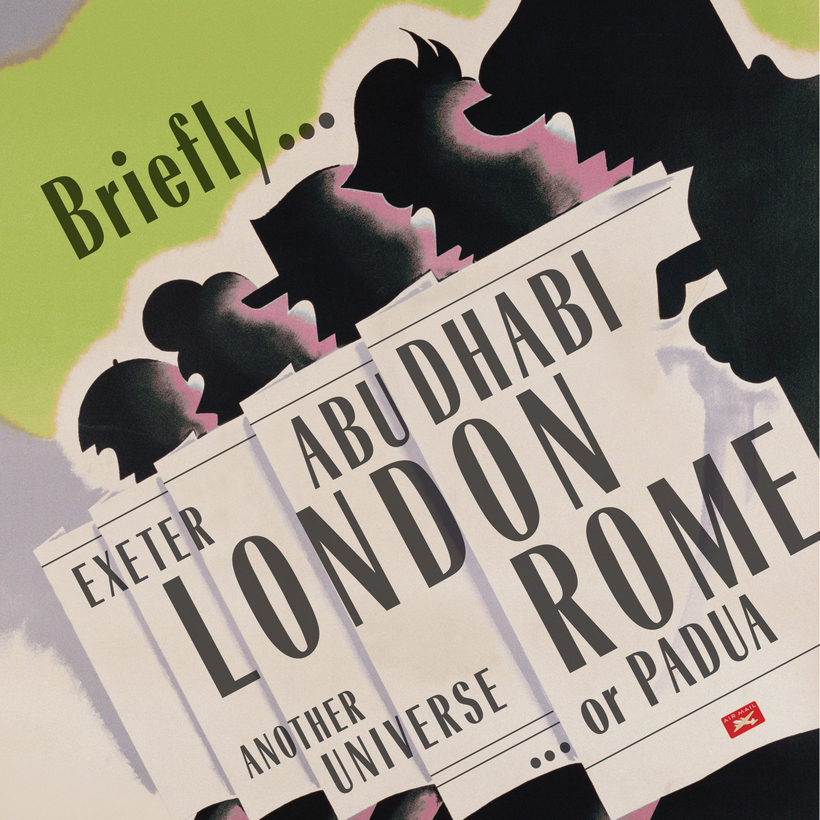In London …
From Dr. Strangelove to Doctor Zhivago?

Stanley Kubrick made only 13 feature films, so every time another might-have-been comes to light, film buffs get all wistful and agitated. (And just try doing that simultaneously.) Perhaps most significant among the unmade Kubricks are a biopic of Napoleon and one movie that eventually did get made, by Steven Spielberg: A.I. Artificial Intelligence. Now we must reckon with the notion of an alternate-universe Doctor Zhivago, because, as the British film historian James Fenwick has discovered, Kubrick and Kirk Douglas—who had worked together on Paths of Glory—tried to buy the movie rights to the Boris Pasternak novel in the late 1950s, soon after it was published.
Fenwick, in the course of researching a book, found a letter Kubrick had written to Pasternak making his case and, according to The Guardian, also discovered a passage in one of the director’s notebooks in which Kubrick noted, “The precise moment of absolute success for a director is when he is allowed to film a great literary classic of over 600 pages, which he does not understand too well, and which is anyway impossible to film properly due to the complexity of the plot or the elusiveness of its form or content”—a surprise to Fenwick, as Kubrick was at that point in his career “more associated with pulp crime fiction” than with “literary classics.” Kubrick and Douglas were unable to secure the rights, and the film was eventually made, in 1965, by David Lean. Kubrick fans are left to wonder, What if…? Though Omar Sharif fans are probably breathing sighs of relief.
In Rome—no, hang on, make that Padua …
Bodies (and parts thereof) in motion
Italian police delivered a donor kidney from Rome to a hospital in Padua in a Lamborghini Huracán, making the 300-mile trip in a little more than two hours (normally—that is, for non–Lamborghini Huracán drivers, non–Polizia di Stato officers, and maybe, come to think of it, non-Italians—the journey takes five hours), and then posting a video of the dash on Twitter. “Police supercars are fitted with a refrigerated baggage compartment for the transport of transplant organs, plasma and vaccines. In 2018 they carried 41 organs on urgent trips and last June completed one of their longest, a 540-mile leap from Bari in the south to Pavia near Milan,” noted The Times of London. Still, as Peter Holderith wrote in The Drive, “it’s unclear why a helicopter or something of the sort wasn’t used, as that would’ve likely been even faster. Perhaps none were available, or there would’ve been a delay to get one.” Perhaps. Or—our guess—it’s simply a matter of style.
In Abu Dhabi …
Part of the Peace Process?
Although it’s filmed mostly in the United Arab Emirates, the new soap opera Al Mirath (The Inheritance) is Riyadh-centric, dealing as it does with two feuding Saudi families. Considered the first Arab soap—the genre is popular in the Middle East but until now has been available only as an import—The Inheritance aired in March and has navigated shooting (and plotlines) around the coronavirus on its way to a first season of 250 episodes. Overwrought melodrama, not that you had any doubts, knows no borders.
In Exeter …
Marathon Men (Dental Torture Not Included)
Serious distance runners have long suspected that the secret to completing a sub-two-hour marathon, which exactly one human being has ever done, does not involve having the more irritating than inspiring “Gonna Fly Now (Theme from Rocky)” blared at you at high, distorted volume as you go by. No, it apparently has something to do with running right up to the so-called wall and, well, not hitting it. But just barely not hitting it. An Exeter University study found that elite runners such as Kenya’s Eliud Kipchoge, who ran a mind-boggling 1:59:40 in Vienna last year, know precisely how far they can push themselves—and how far they can’t. “There are three numbers we think are important,” Andrew Jones, an Exeter physiologist, told The Sunday Times. “One is the maximum rate of oxygen you can take in and use per minute. You can think of that as the capacity of the engine. The other is, as with cars, how economically you move. The third is where the red line is.” To such acute self-awareness, naturally, you probably want to add speed, training, and all kinds of stamina. And, sure, some other song.
In another universe …
A classic reboots
The long-democratic Wellington boot is returning to its aristocratic roots, with a vengeance. A year ago, Country Life ran a piece listing its Top 10 Wellies, with a price range that seems modest compared with what is now available. One current example: Dior is currently offering a designer version for around $990 a pair. It’s also white, which is what you want in a mud boot. If life is your catwalk, pull ’em on, but it’s worth remembering that even high-end Wellies are still distantly related to … well, there’s no other way to put it: galoshes.
George Kalogerakis is a Writer at Large for Air Mail


